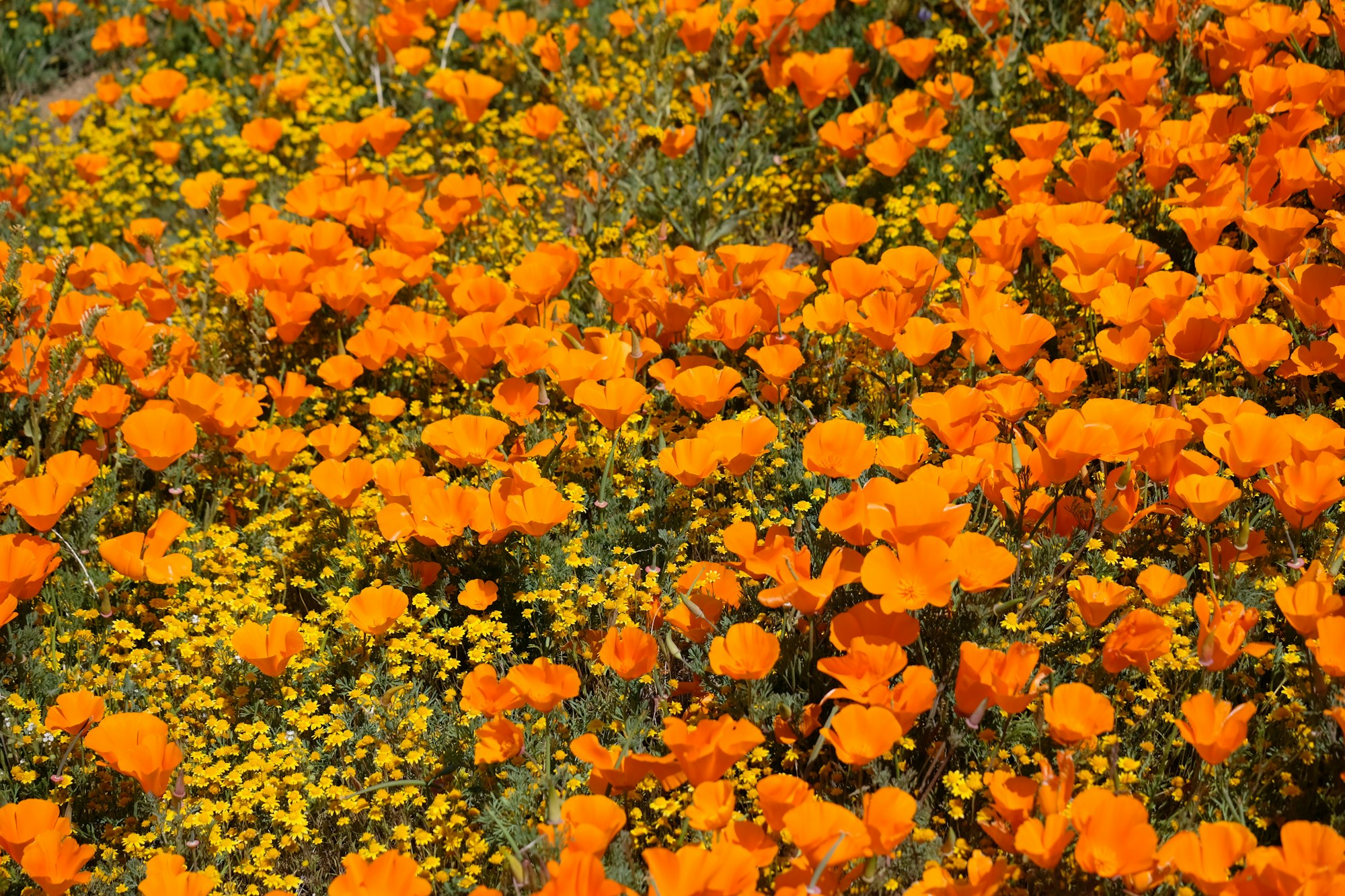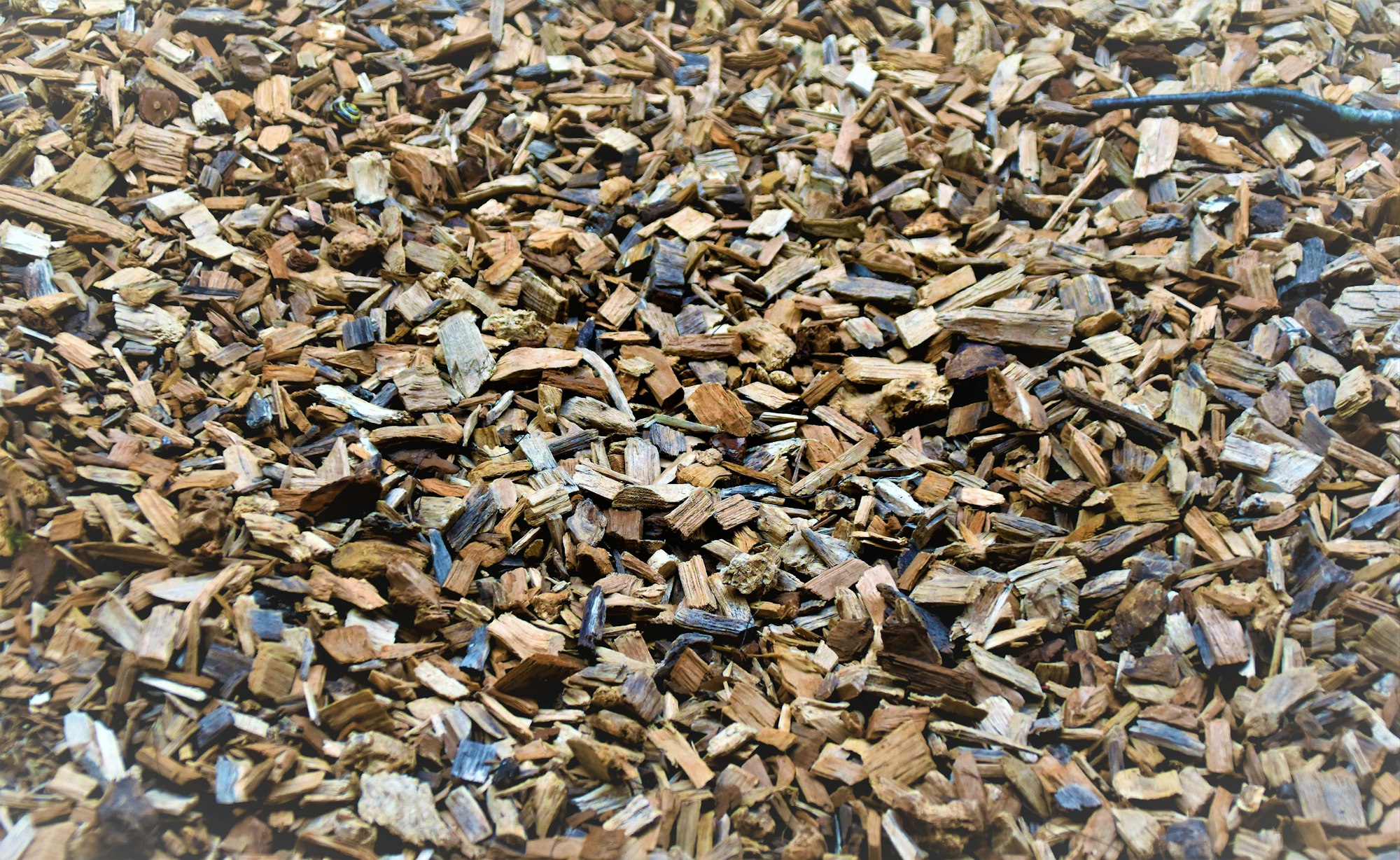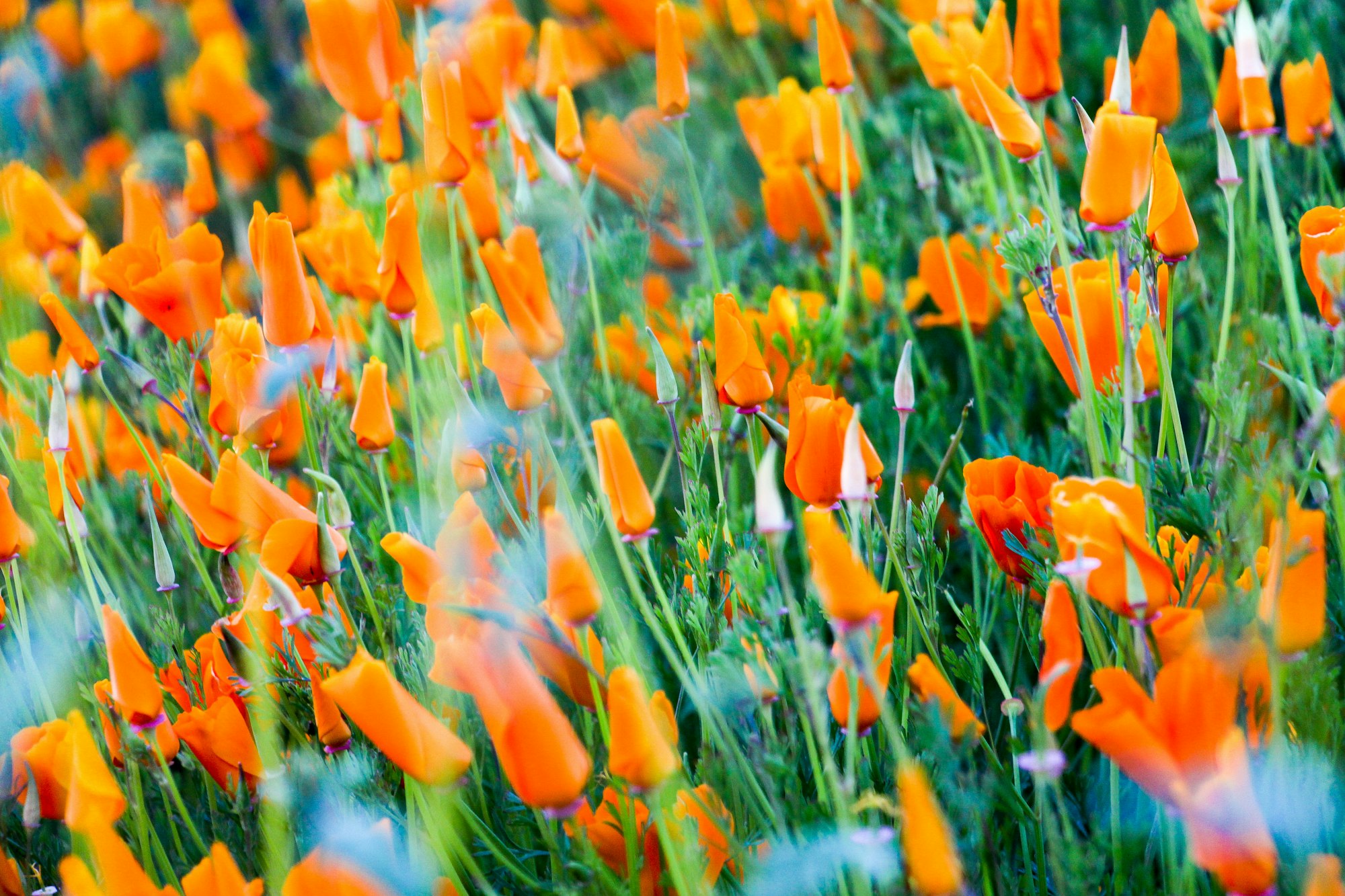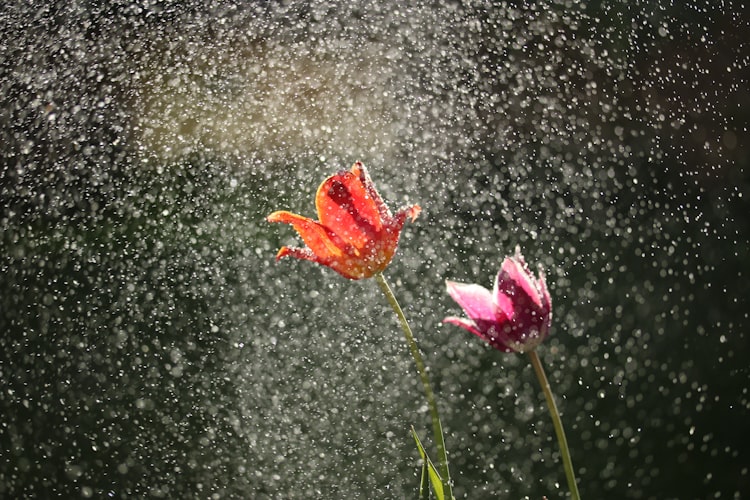California Native Wildflowers

One of the most spectacular natural events in California are those years when the rainy season delivers the right amount of rain for a Superbloom. When this happens, the hills of California are blanketed in color from wildflowers.

You can create your own superbloom at home. Native wildflower seed is easy to grow as long as you follow some basic tips. Between Mid-October and February, you can sow your seeds for a spring wildflower show. Ideally, you want the wildflowers to get soaked with rain because wet, cold conditions are perfect for seeds to germinate. In recent drought years in California, we have seen very little autumnal rain and warm temperatures through November. In these conditions, it's OK to start sowing later than normal.
Preparing Your Site
Optimal conditions for growing plants from seed is when you sow your seeds on bare soil. Make sure you remove any weeds or grass, but do not till the soil more than needed to remove the weeds. Excessive tilling will bring unwanted weed seeds to the surface. Most people don't like the look of bare soil, so you can use a thin layer of mulch and sow the seeds on top of that instead.
Shredded, Wood Chip or Bark Mulch?
For wildflower seed germination, I prefer to use shredded wood mulch. It does not soak up too much water, drawing moisture away from the seeds. It also allows a lot of sunlight through to the middle of the mulch, where seeds are hidden from birds. Wood chip and Bulk mulch is longer lasting and less likely to blow away, however they can suppress seed germination, which makes them better suited to weed prevention. Wildflowers grow like weeds, and thrive in loose organic matter or bare top-soil.


Sowing the Seed
You can either scatter the seed on to your soil (if covering with mulch), or cover them with a light layer of soil (1/8th inch). When sowing seeds in clay soil garden beds, raking the soil to break up the topsoil is a good approach. Another special scenario is on hillside slopes. I recommend you sprinkle the soil with water to prevent the seeds rolling down the hill as you scatter them. In all situations, water the area immediately to saturate the seeds even if rain is in the short term forecast. Doing this this will prevent the seeds falling prey to hungry birds and help push them into the ground. Watering is especially helpful if you scattered seed onto a mulched bed. The soil must stay consistently moist while seeds are germinating and growing. Hand water during dry spells if it hasn't rained much.

Once the seedlings start growing, check your beds and remove any weeds that appear. You may not know the difference between a weed and a wildflower seedling. The folks at the Theodore Payne Foundation created this useful guide to help you with this.

If you don't have a garden of your own, or if it is too late to start sowing seed, you can go enjoy wildflowers in nature. For the last 40 years, The Theodore Payne Foundation gives weekly updates from March through May on where to see wildflowers in the Golden State through it's Wildflower Hotline. In the past, you called into a recorded message, but this is now updated for the digital age with weekly PDF updates on their site. If you want you can still call the hotline to hear the latest update voiced by Hollywood actor Joe Spano every Friday.






Comments ()